Calcite
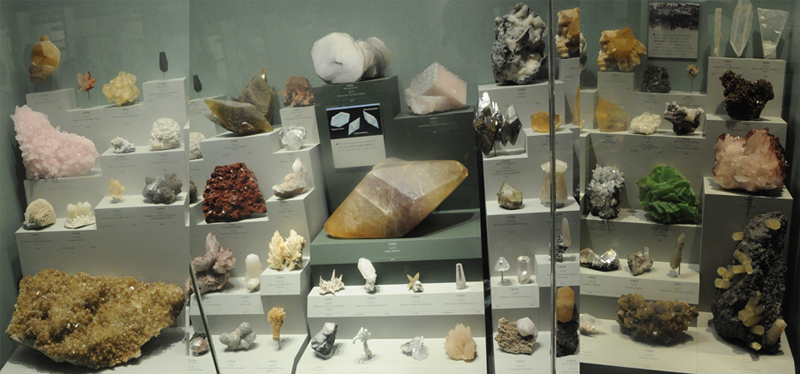
The varieties of calcite, CaCO3, are so numerous and so varied that an entire display case at the Smithsonian Museum of Natural History is devoted to just calcite. Calcite is the most abundant of the carbonate minerals.
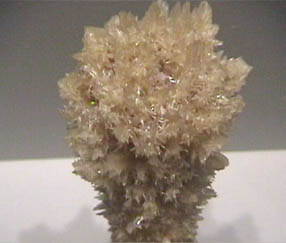 A calcite sample which looks something like a cactus. From the Santa Rita Mountains of Arizona. The top is about 3 cm across. | 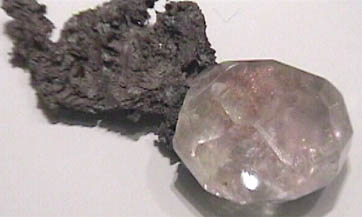 Calcite growing with metallic copper. Calcite crystal about 3-4 cm across. From the Keweenaw Peninsula, Michigan. |
 Calcite formation from Coahuila, Mexico. Sample 8-10 cm across. | 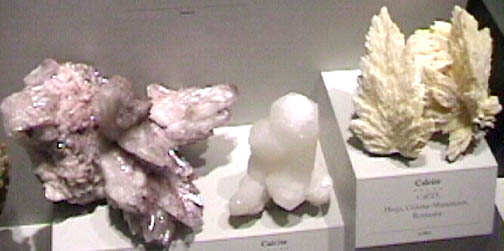 Three more of the almost endless variety of calcite growth patterns. The left sample is about 15 cm across. |
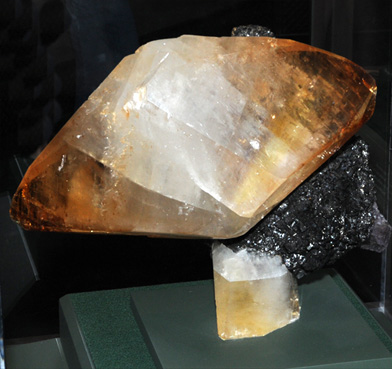 Calcite formed with sphalerite, the black crystals, and with fluorite, purple crystals. The calcite is in the form of two large twinned crystals. Elmwood Mine, Smith County, Tennessee. Calcite crystal about 25 cm. 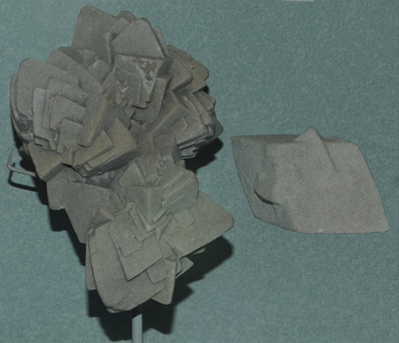 Calcite with sand inclusions from Fontainebleau, France. The left sample is about 8x15cm. |
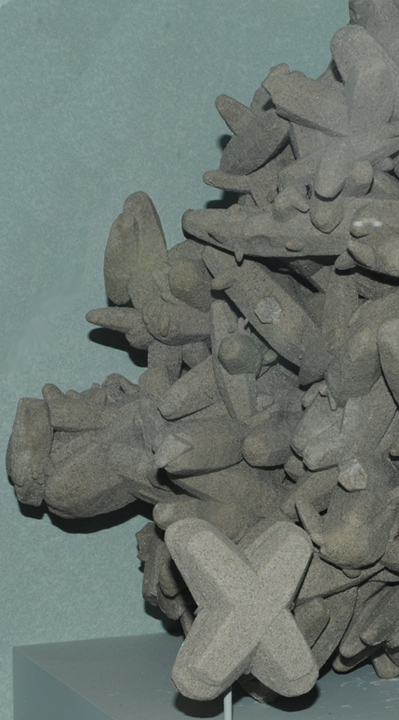 The small x-shaped sample is calcite with sand inclusions from Washabaugh County, South Dakota. The large sample is calcite with sand inclusions from Snake Butte, South Dakota. This is a section of a large sample of about a meter height. |
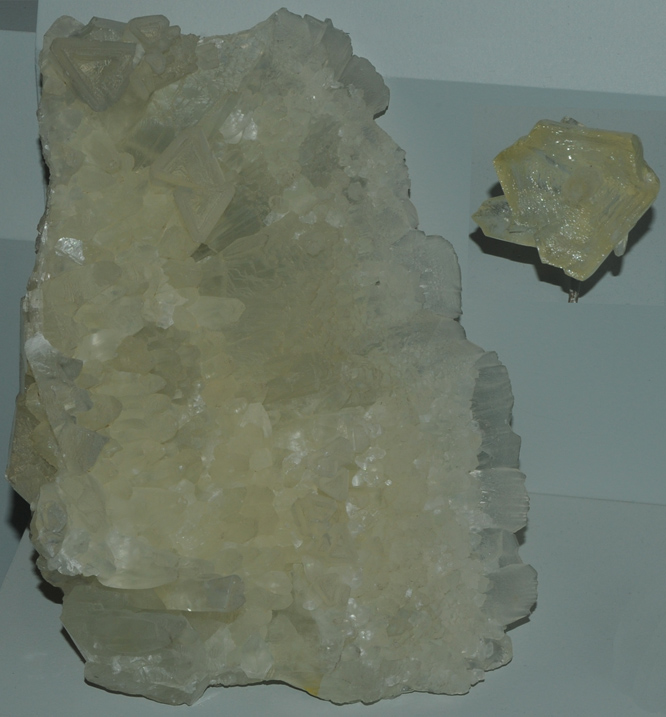 |
The larger sample of calcite is about 20x30 cm and is an example of what is called hopper crystal growth. This implies that the outside of the crystal has grown much faster than the inside, leaving the inside as a hollow stair-stepped structure. This sample is from Attendorn, Nord Rhein-Westphalen, Germany. The smaller sample is also a hopper crystal of calcite and is from Crystal Run quarry #2, Lecantu, Florida. |
|
This calcite in stalagmite form is from Quanshi, Quilin, China. The sample is about 40 cm across. |
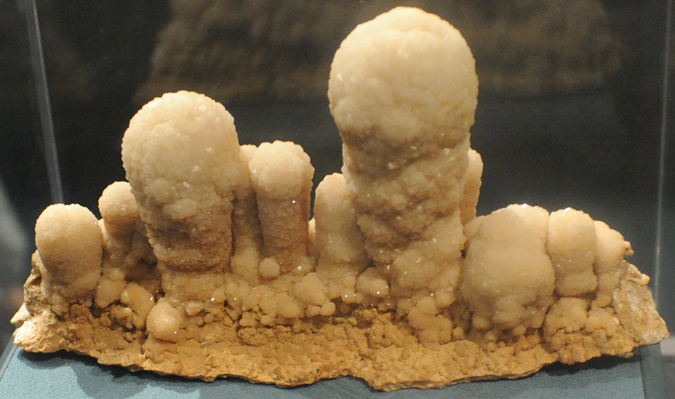 |
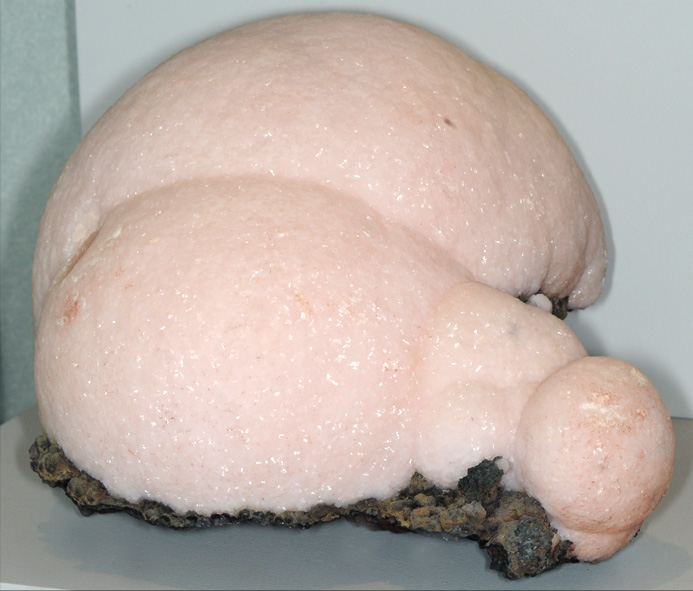 |
This sample is described as manganoan calcite. It is about 15cm wide and is from Montreal mine, Montreal, Wisconsin. |
| More calcite varieties |
| Minerals |
| HyperPhysics*****Geophysics | R Nave |